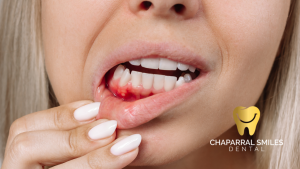Sedation dentistry is a specialized field within the dental industry that focuses on providing a comfortable and anxiety-free experience for patients during dental procedures. It involves the use of sedatives to help patients relax and feel at ease while receiving dental treatment. This is particularly beneficial for individuals who experience dental phobia, anxiety, or fear of needles, drills, or the dental environment in general. Sedation dentistry allows these patients to receive the dental care they need without experiencing the stress and discomfort that often accompanies a visit to the dentist.
Sedation dentistry is not only beneficial for anxious patients, but it also helps those with a low pain threshold, sensitive gag reflex, or difficulty sitting still for long periods of time. By using sedatives, dentists can ensure that their patients are calm and relaxed throughout the entire procedure, making it easier for them to perform the necessary dental work. This approach has revolutionized the way dental care is delivered, as it allows individuals who would otherwise avoid the dentist to receive the treatment they need for optimal oral health.
Key Takeaways
- Sedation dentistry is a technique used to help patients relax during dental procedures, especially those with dental anxiety or fear.
- The benefits of sedation dentistry include reducing anxiety, increasing comfort, and allowing for multiple procedures to be completed in one visit.
- Types of sedation dentistry available include nitrous oxide, oral sedatives, IV sedation, and general anesthesia, each with varying levels of sedation.
- Sedation dentistry plays a crucial role in pain management by minimizing discomfort and allowing for more extensive dental work to be completed.
- Sedation dentistry is improving patient comfort and trust by creating a more relaxed and positive dental experience, leading to better oral health outcomes.
The Benefits of Sedation Dentistry for Anxious Patients
For many people, visiting the dentist can be a source of significant anxiety and fear. This can lead to avoidance of necessary dental care, resulting in deteriorating oral health and more extensive treatment needs in the future. Sedation dentistry offers a solution to this problem by providing a safe and effective way to manage anxiety and discomfort during dental procedures. By using sedatives, dentists can help anxious patients feel relaxed and at ease, allowing them to receive the care they need without experiencing overwhelming fear or stress.
One of the key benefits of sedation dentistry for anxious patients is that it can help them overcome their fear of the dentist and make regular dental visits a more manageable experience. This can lead to improved oral health outcomes, as patients are more likely to seek out preventive care and address any dental issues in a timely manner. Additionally, sedation dentistry can help reduce the physical symptoms of anxiety, such as a racing heart or sweaty palms, making the entire dental experience more comfortable for the patient. Overall, sedation dentistry has the potential to significantly improve the oral health and well-being of individuals who struggle with dental anxiety.
Types of Sedation Dentistry Available
There are several different types of sedation dentistry available to meet the diverse needs of patients. The most common forms of sedation used in dentistry include nitrous oxide (laughing gas), oral sedatives, and intravenous (IV) sedation. Nitrous oxide is a mild sedative that is inhaled through a mask placed over the nose, providing a sense of relaxation and euphoria during dental procedures. Oral sedatives, such as Valium or Halcion, are taken in pill form prior to the appointment to induce a state of calm and relaxation. IV sedation involves the administration of sedatives directly into the bloodstream, allowing for a deeper level of sedation that can be adjusted as needed throughout the procedure.
Each type of sedation has its own advantages and considerations, and the choice of sedation method will depend on the patient’s individual needs and the nature of the dental procedure being performed. Dentists are trained to assess each patient’s medical history, anxiety level, and treatment requirements to determine the most appropriate form of sedation for their specific situation. By offering a range of sedation options, dentists can ensure that all patients have access to the care they need in a way that is safe, comfortable, and tailored to their unique needs.
The Role of Sedation Dentistry in Pain Management
Pain management is a critical aspect of dental care, as many patients experience discomfort or sensitivity during certain procedures. Sedation dentistry plays a key role in pain management by helping patients feel more relaxed and at ease during their dental appointments. By reducing anxiety and fear, sedatives can also help minimize the perception of pain, making it easier for patients to tolerate discomfort and undergo necessary treatment without undue stress or discomfort.
In addition to its role in managing emotional and psychological pain, sedation dentistry can also help control physical pain during dental procedures. For example, local anesthetics are often used in combination with sedatives to numb the treatment area and prevent pain during invasive procedures such as root canals or tooth extractions. By using sedatives in conjunction with local anesthetics, dentists can ensure that their patients remain comfortable and pain-free throughout the entire procedure, promoting a positive and stress-free experience.
How Sedation Dentistry is Improving Patient Comfort and Trust
Sedation dentistry has had a profound impact on patient comfort and trust within the dental setting. By providing a way for anxious or fearful patients to feel more at ease during their appointments, sedation dentistry has helped improve overall patient satisfaction and trust in dental care. Patients who may have previously avoided the dentist due to fear or anxiety are now able to receive treatment in a way that feels safe and comfortable, leading to greater confidence in their dental providers and a more positive overall experience.
In addition to improving patient comfort, sedation dentistry has also helped build trust between patients and their dental providers by demonstrating a commitment to patient-centered care. By offering sedation options and taking steps to address patient anxiety and fear, dentists show that they understand and prioritize their patients’ needs and well-being. This can lead to stronger patient-dentist relationships, increased loyalty, and better long-term oral health outcomes as patients are more likely to seek out regular care and follow through with recommended treatment plans.
The Impact of Sedation Dentistry on Dental Procedures and Treatment Plans

Sedation dentistry has had a significant impact on the way dental procedures are performed and treatment plans are developed. By providing a way for anxious or fearful patients to receive care in a comfortable and relaxed state, sedation dentistry has made it possible for dentists to perform more complex or lengthy procedures with greater ease and efficiency. This has expanded the scope of services that can be offered in the dental office, allowing for more comprehensive treatment options and improved outcomes for patients with diverse needs.
In addition to its impact on individual procedures, sedation dentistry has also influenced treatment planning by enabling dentists to address multiple issues in a single appointment. For example, patients who require extensive restorative work or multiple extractions can often have all of their treatment completed in one visit under sedation, minimizing the need for multiple appointments and reducing overall treatment time. This not only improves patient convenience but also allows for more comprehensive care that addresses all of the patient’s needs in a coordinated and efficient manner.
The Future of Sedation Dentistry: Advancements and Innovations
As technology and research continue to advance, the future of sedation dentistry holds great promise for further improvements in patient care and treatment outcomes. Innovations in sedative medications, delivery methods, and monitoring techniques are likely to enhance the safety and effectiveness of sedation dentistry, making it an even more valuable tool for managing patient anxiety and discomfort. Additionally, advancements in personalized medicine may lead to more tailored approaches to sedation that take into account each patient’s unique medical history, preferences, and treatment needs.
The future of sedation dentistry may also see increased integration with other areas of healthcare, such as telemedicine and virtual reality technology. These innovations have the potential to further enhance patient comfort and relaxation during dental procedures by providing immersive experiences that distract from the clinical environment and promote a sense of calm. By leveraging these emerging technologies, dentists may be able to offer even more personalized and effective sedation options that cater to the individual needs and preferences of each patient.
In conclusion, sedation dentistry has revolutionized the way dental care is delivered by providing a safe and effective way to manage anxiety and discomfort during dental procedures. By offering a range of sedation options tailored to individual patient needs, dentists can ensure that all patients have access to the care they need in a way that is safe, comfortable, and effective. The future of sedation dentistry holds great promise for further improvements in patient care and treatment outcomes through advancements in technology, research, and personalized medicine. As these innovations continue to unfold, sedation dentistry is likely to play an increasingly important role in promoting patient comfort, trust, and overall oral health.
If you’re interested in learning more about how sedation dentistry can improve your dental experience, check out this article on urgent dental care. It discusses the benefits of sedation dentistry for patients who may be experiencing dental emergencies and need immediate treatment. This article provides valuable information on how sedation can help patients feel more comfortable and relaxed during urgent dental procedures.





